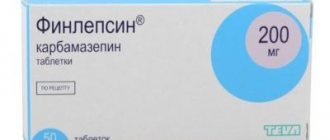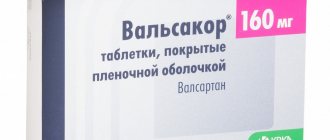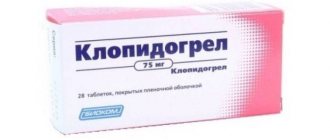Write a review
Reviews: 0
Manufacturers: Lek
Active ingredients
- Alendronic acid
Disease class
- Postmenopausal osteoporosis
- Drug-induced osteoporosis
- Osteoporosis, unspecified
Clinical and pharmacological group
- Not indicated. See instructions
Pharmacological action
- Inhibiting bone resorption
Pharmacological group
- Correctors of bone and cartilage tissue metabolism
Compound
The drug is presented in the form of film-coated tablets. The main active ingredient is sodium alendronate trihydrate. In addition, the tablet contains the following excipients:
- croscarmellose sodium;
- microcrystalline cellulose;
- magnesium stearate;
- anhydrous colloidal silicon dioxide.
As for the shell, it consists of the following components:
- macrogol;
- carrageenan;
- cellulose.
The composition of the drug is indicated on the packaging, and a description can also be found in the instructions. Before taking the tablets, you need to familiarize yourself with the composition, which will allow you to determine whether they contain components that cause an allergic reaction. You need to be careful about your health and always control what you take orally.
Important! If the drug is not suitable, you should use a substitute.
Forosa
Active substance:
Alendronic acid*
Pharmgroup:
Correctors of bone and cartilage tissue metabolism
Average price in pharmacies
| Name | Manufacturer | average price |
| Forosa 0.07 n12 tablet p/film/shells | SANDOZ | 1342.00 |
| Forosa 0.07 n4 tablet p/film/shells | SANDOZ | 542.00 |
| Forosa 0.07 n8 tablet p/film/shells | SANDOZ | 795.00 |
Analogs for the active substance:Alendronate Alendronate sodium Alendronate Pliva Ostalon Osterepar Strongos Tevanat Fosamax | Application area:Secondary osteoporosis caused by the use of glucocorticoids Menopausal osteoporosis Osteoporosis in menopause Osteoporosis in menopause Osteoporosis in postmenopause Osteoporosis in the postmenopausal period Osteoporosis due to androgen deficiency Primary osteoporosis Postmenopausal osteoporosis Osteoporosis due to estrogen deficiency Osteoporosis steroid Osteoporosis in postmenopausal women Osteoporosis in postmenopausal women Osteoporosis in postmenopausal women and after hysterectomy Osteoporosis in men Parathyroid osteoporosis Primary osteoporosis Perimenopausal osteoporosis Postmenopausal osteoporosis Postmenopausal osteoporosis Postmenopausal osteoporosis Postmenopausal bone demineralization Post-traumatic osteoporosis Loss of calcium in bones and teeth Presenile osteoporosis Systemic osteoporosis Steroid osteoporosis |
Pharmacodynamics and pharmacokinetics
Forosa is a non-hormonal drug that stimulates osteogenesis. With its help, they suppress the activity of osteoclasts. The therapeutic effect is achieved by creating a balance between bone restoration and bone resorption. Regulation of phosphorus-calcium metabolism allows you to increase the mineral density of bone tissue. Under the influence of active substances, the formation of normal histological structures is accelerated.
When tablets are taken orally on an empty stomach, the bioavailability ranges from 0.64% to 0.59%. In this case, you need to eat 2 hours after taking alendronate. If this condition is violated, the absorption of the active substance will decrease. So, if you eat an hour after taking the medicine, the bioavailability will decrease to 0.46%, and after 30 minutes. – up to 0.39%.
When treating, it is worth considering not only the interval between intake and food, but also drinking. Drinking coffee and orange juice with the pills reduces their effectiveness by more than 60%. The phenomenon of alendronate metabolism was not noted.
After three days, approximately half of the alendronate is excreted through the kidneys. A small dose is released through the intestines.
Instructions:
Clinical and pharmacological group
16.023 (Bone resorption inhibitor for osteoporosis)
Release form, composition and packaging
White film-coated tablets, round, biconvex, with “ALN 70” engraved on one side.
| 1 tab. | |
| sodium alendronate trihydrate | 91.350 mg, |
| which corresponds to the content of alendronic acid | 70 mg |
Excipients: microcrystalline cellulose, colloidal anhydrous silicon dioxide, croscarmellose sodium, magnesium stearate.
Shell composition: Luster Clear LC 103 (microcrystalline cellulose, carrageenan, macrogol 8000).
2 pcs. - blisters (1) - cardboard packs. 2 pcs. - blisters (2) - cardboard packs. 2 pcs. - blisters (3) - cardboard packs. 2 pcs. - blisters (4) - cardboard packs. 2 pcs. - blisters (6) - cardboard packs. 4 pcs. - blisters (1) - cardboard packs. 4 pcs. - blisters (2) - cardboard packs. 4 pcs. - blisters (3) - cardboard packs. 4 pcs. - blisters (4) - cardboard packs. 4 pcs. - blisters (6) - cardboard packs.
pharmachologic effect
Non-hormonal specific inhibitor of osteoclastic bone resorption, suppressing the activity of osteoclasts. Stimulates osteogenesis, restores a positive balance between bone resorption and restoration, increases bone mineral density (regulates phosphorus-calcium metabolism), promotes the formation of bone tissue with a normal histological structure.
Pharmacokinetics
Suction
The bioavailability of alendronate at a dose of 70 mg when taken orally on an empty stomach 2 hours before a standard breakfast was 0.64% in women and 0.59% in men. When taken 1 hour or 30 minutes before breakfast, the bioavailability of alendronate decreased to 0.46% and 0.39%, respectively. Clinical studies have confirmed the effectiveness of alendronate when administered at least 30 minutes before the first meal or drink. The bioavailability of alendronate is negligible when taken with food or within 2 hours after a meal. When taken together with coffee or orange juice, the bioavailability of the drug decreases by approximately 60%. The concentration of the drug in blood plasma is insignificant (less than 5 ng/ml).
Distribution
Alendronate, after intravenous administration at a dose of 1 mg/kg, is temporarily distributed into soft tissues and then quickly redistributed into bone tissue or excreted in the urine. The average Vd in a steady state, not counting bone tissue, is about 28 liters in humans. Plasma protein binding is about 78%.
Metabolism
There is no evidence that alendronate is metabolized in humans.
Removal
After a single intravenous administration of alendronate, labeled with carbon atoms [14C], about 50% is excreted by the kidneys within 72 hours and a small amount is excreted through the intestines. After a single intravenous administration of alendronate at a dose of 10 mg, renal clearance is 71 ml/min, and systemic clearance does not exceed 200 ml/min. 6 hours after intravenous administration, the plasma concentration decreases by more than 95%.
Dosage
The tablets should be taken in the morning, no later than 30 minutes before the first meal, drink or other medication, with a full glass of plain water (at least 200 ml). The tablets must not be chewed. You should not take a horizontal body position for at least 30 minutes after taking the drug. Do not take the drug before bed or before getting out of bed in the morning.
The recommended dose is 70 mg (1 tablet) once a week.
For elderly patients and patients with moderate renal impairment (creatinine clearance more than 35 ml/min), no dose adjustment is required.
Overdose
Symptoms: abdominal pain, dyspeptic disorders, dysphagia, heartburn, esophagitis, gastritis; Hypocalcemia and hypophosphatemia may develop.
Treatment is symptomatic. The use of milk and antacids to bind alendronate is indicated. Due to the risk of damage to the esophagus, vomiting should not be induced and the patient should be in an upright position.
Drug interactions
Concomitant use of calcium supplements (including dietary supplements) and antacids impairs the absorption of alendronate. In this regard, it is recommended to take other medications no earlier than 30 minutes after taking Forosa®.
NSAIDs (including acetylsalicylic acid) may increase the gastrointestinal side effects of alendronic acid.
Although specific drug interaction studies have not been conducted, the use of alendronate in clinical studies with a large number of commonly used drugs was not accompanied by the development of clinically significant interactions.
Use during pregnancy and lactation
The drug is contraindicated during pregnancy and breastfeeding.
Side effects
From the digestive system: abdominal pain, dyspeptic disorders (constipation or diarrhea, flatulence, nausea, vomiting), dysphagia, heartburn, esophagitis, gastric dystonia, ulceration of the mucous membrane of the mouth, pharynx, esophagus, stomach and duodenum, melena.
From the nervous system: headaches, irritability.
From the musculoskeletal system: pain in bones, muscles and joints; osteonecrosis of the jaw has rarely been observed during treatment with bisphosphonates.
From the organ of vision: uveitis, scleritis.
Allergic reactions: hypersensitivity reactions (including skin hyperemia, urticaria, angioedema).
Other: photosensitivity, asymptomatic transient hypocalcemia and hypophosphatemia.
Storage conditions and periods
The drug should be stored in a dry place, protected from light, out of reach of children, at a temperature not exceeding 25°C. Shelf life: 3 years.
Indications
- treatment of osteoporosis in postmenopausal women, incl. to reduce the risk of vertebral compression fractures and hip fractures;
- treatment of osteoporosis in men to prevent fractures;
- treatment of osteoporosis caused by long-term use of corticosteroids.
Contraindications
- strictures or achalasia of the esophagus and other conditions leading to a slowdown in the movement of food through the esophagus;
- the patient’s inability to stand or sit for 30 minutes;
- hypocalcemia;
- severe renal failure (creatinine clearance less than 35 ml/min);
- severe disturbances of mineral metabolism;
- pregnancy;
- lactation period (breastfeeding);
- children's age (efficacy and safety of use have not been established);
- hypersensitivity to alendronate or other components of the drug.
The drug should be prescribed with caution to patients with gastrointestinal diseases (dysphagia, gastritis, duodenitis, peptic ulcer in the acute stage, active gastrointestinal bleeding or a history of surgery on the upper gastrointestinal tract), hypovitaminosis D.
special instructions
The tablets should be taken only with plain water, because... other drinks (including mineral water, tea, coffee, fruit juices) impair the absorption of the drug.
Taking alendronate before bed or in a horizontal position increases the risk of developing esophagitis.
Before starting therapy with Forosa®, correction of hypocalcemia and other metabolic disorders (such as vitamin D deficiency) is necessary. Due to the increase in bone mineral density during alendronate therapy, a slight clinically asymptomatic decrease in serum calcium and phosphate levels is possible, especially in patients receiving corticosteroids, in whom calcium absorption may be reduced. Therefore, ensuring that a sufficient amount of calcium and vitamin D enters the body is especially important in patients receiving GCS.
Patients should be warned that if they accidentally miss a dose of the drug once a week, they should take 1 tablet. in the morning of the next day (it is unacceptable to take 2 tablets in one day). Subsequently, you should continue to take 1 tablet. on the day of the week that was chosen at the beginning of therapy.
Osteonecrosis of the jaw has rarely been reported when other bisphosphonates were prescribed. Most cases have been reported in cancer patients during dental procedures, with a few cases in patients with postmenopausal osteoporosis or other diseases. Risk factors for the development of osteonecrosis of the jaw include an established diagnosis of cancer, concomitant therapy (chemotherapy, radiation therapy, corticosteroids) and other disorders (anemia, coagulopathy, infection, gum disease). Most cases were observed with intravenous administration of bisphosphonates, but isolated cases were observed in patients receiving drugs orally.
Dental surgery during bisphosphonate therapy can increase the manifestations of osteonecrosis of the jaw. It is unknown whether discontinuation of bisphosphonates reduces the risk of osteonecrosis of the jaw. The decision to conduct treatment must be made for each patient individually after assessing the risk/benefit ratio.
Use for renal impairment
For patients with moderate renal impairment (creatinine clearance more than 35 ml/min), no dose adjustment is required.
When CC is less than 35 ml/min, the use of the drug is contraindicated.
Conditions for dispensing from pharmacies
The drug is available with a prescription.
Indications and contraindications
Before prescribing the drug, the doctor pays attention to the indications. To do this, he conducts an examination, on the basis of which the specifics of therapy are established. As for Forosa, the medicine is widely used to treat the following pathologies:
- osteoporosis and prevention of fractures in the stronger sex;
- osteoporosis, as well as the prevention of diseases in women such as compression fractures of the vertebrae and femoral neck;
- osteoporosis caused by long-term use of glucocorticosteroids.
When it comes to taking medications, we should not forget that there are some contraindications. Thus, Foroz tablets are not recommended to be taken in the following cases:
- during pregnancy and during breastfeeding;
- in violation of mineral metabolism;
- if you are allergic to the components of the drug;
- In young age;
- in acute form of renal failure;
- with hypocalcemia;
- for pathologies of the digestive tract;
- if a person is unable to remain standing or sitting for half an hour.
All these contraindications are taken into account at the stage of prescribing therapy.
To prevent adverse reactions, do not take medications on your own.
Patient reviews
Experts have already prescribed Forosa tablets to many people; below are some opinions about this drug and the degree of its effectiveness:
- Elena, 52 years old: “I have been taking the drug Forosa as prescribed by my attending physician for several years now, and at the same time I am monitoring the calcium level in my blood. I have joint and muscle pain, but I feel that the pills are helping me because the diseases have stopped progressing.”
- Alexander, 47 years old: “I have chronic diseases that cause increased bone fragility, so I was prescribed Forosa tablets.” The drug is very effective, it stopped the progression of pathological processes. However, it must be taken in strict accordance with the instructions: I take the tablets in the morning, about 3 hours before breakfast. I broke this rule only once and ate food immediately after taking it, there were terrible side effects from digestion.”
- Lyudmila, 38 years old: “The doctor prescribed me the drug Forosa after measuring bone mineral density. I have been taking the course for two months now, no negative manifestations have been observed. I’ll go for a follow-up appointment soon, another diagnostic will be carried out, which will allow us to see the dynamics.”
- Vasily, 53 years old: “The drug Forosa was prescribed to me several months ago due to disorders of bone tissue density. I recently had a follow-up appointment with my doctor and had blood tests done. Their results showed that the tablets were working and bone health was improving.”
- Margarita, 48 years old: “Even without tests, it is clear that Forosa is helping me: attacks of joint pain have become more rare and not so severe. In addition to taking the pills, I try to maintain moderate physical activity and walk more often to increase the effectiveness of the drug.”
Side effects
In case of overdose or the presence of obvious contraindications, the patient may experience side effects from:
- Digestion. They manifest themselves as pain in the abdomen, heartburn, melena, nausea and vomiting, and dyspepsia. In addition, the patient may experience bleeding in the digestive tract and perforation of the esophagus.
- Nervous activity. The main manifestation is headache, taste bud disturbance, dizziness and irritability.
- Vision. In rare cases, scleritis and uveitis are observed.
- Skin reactions. Side effects manifest themselves in the form of urticaria, photosensitivity, hyperemia and angioedema.
In addition, the medicine causes pain in the bones, muscles and joints, swelling in the joints and characteristic fractures in the femur.
Dosage and overdose
To achieve maximum effect and prevent complications, you must adhere to the recommended medication regimen:
- take the tablet at least 30 minutes in advance. before meals, with plenty of water;
- It is not recommended to crush and dissolve the tablets, as this may cause irritation of the esophagus;
- After taking it, you should not lie down for the next half hour.
The average course of treatment is a week. In this case, it is prohibited to take more than 1 tablet per day. The course of therapy is selected by the doctor individually for each patient. If you ignore the recommendations and use a large amount of medicine, this can lead to the following consequences:
- deficiency of calcium and phosphorus;
- inflammation of the gastric mucosa;
- heartburn;
- difficulty swallowing;
- abdominal pain;
- vomiting;
- damage to the esophagus.
Important! In case of overdose, drink enough milk or antacids. This will slow down the absorption.
special instructions
Before you start taking Forosa tablets, you should read the following special instructions:
- It is necessary to avoid taking the drug before taking a supine position, as this increases the risk of inflammation of the mucous membranes of the esophagus.
- Before taking the drug, all problems associated with insufficient concentration of calcium in the blood plasma, impaired calcium metabolism and vitamin D deficiency must be eliminated.
- The tablets are taken weekly on the same selected day. If you accidentally miss the appointment, your appointment will be the next day, but this will not affect your future schedule in any way. Taking two tablets at once is strictly prohibited.
- It is not recommended to combine the drug with dental surgery. Such measures are taken only in emergency cases, upon the decision of a specialist.
Interaction
It is recommended to take other medications half an hour after taking alendronate. This will reduce the risk of side effects due to the interaction of active substances. Particular attention should be paid to non-steroidal anti-inflammatory drugs. The simultaneous use of such drugs leads to gastrointestinal disorders.
Osterepar is often used as a substitute
Analogs
The following modern medications from various manufacturers have similar properties:
- Osterepar;
- Fosamax;
- Tevanat;
- Ostalon.
Forosa is available by prescription, so you should consult your doctor first. As a result of the examination, the specialist will be able to determine whether the patient has contraindications to taking medications.
Similar:
- Instructions for use of Movalis, indications and contraindications, composition and release form
- Elafa: instructions for use, composition and indications
- "Dexamethasone" for the treatment of joint pain, doses, contraindications, analogues, reviews, price
- Steroid anti-inflammatory drugs for the treatment of joints: their characteristics
- Treatment of gout, or what drugs remove uric acid
- Instructions for use of Melbek, what is included in the drug and its mechanism of action
- Instructions for use of Artrosan and its composition, indications and contraindications







